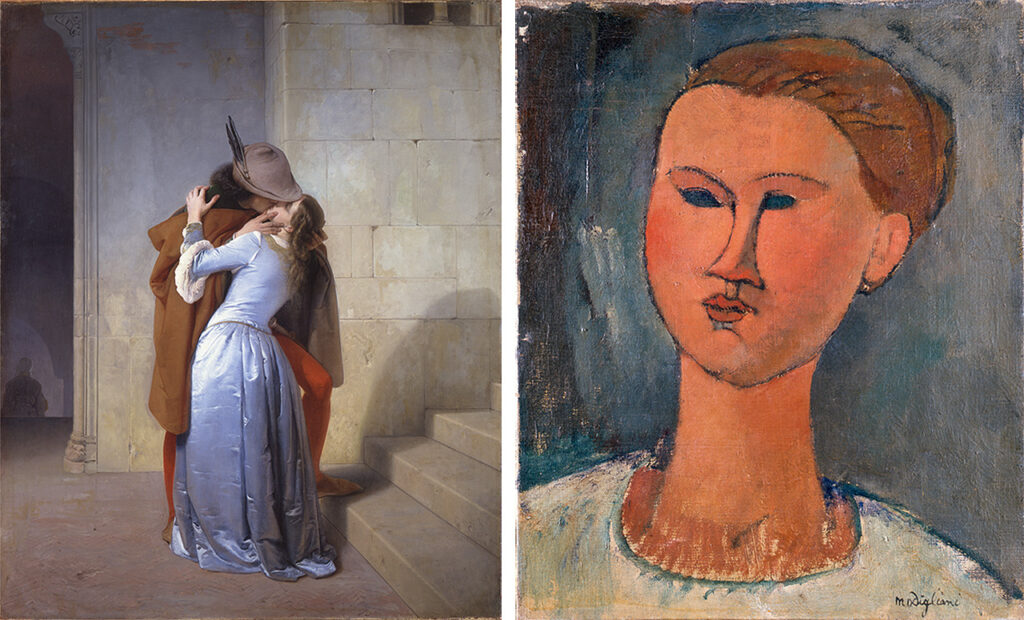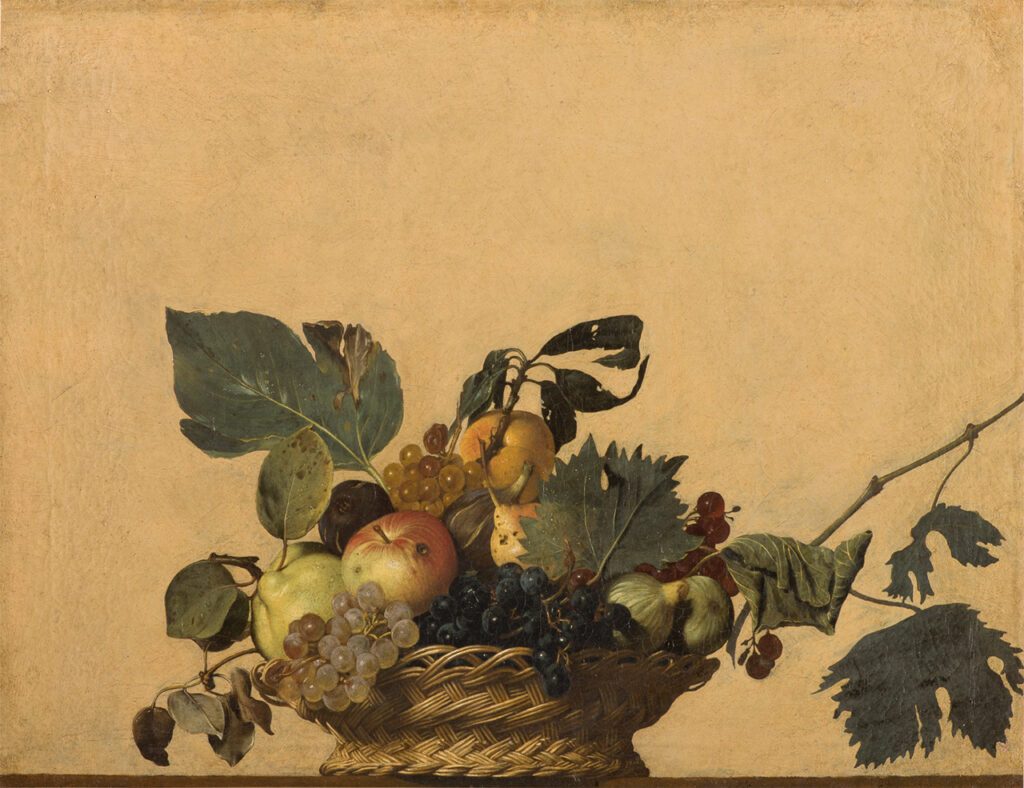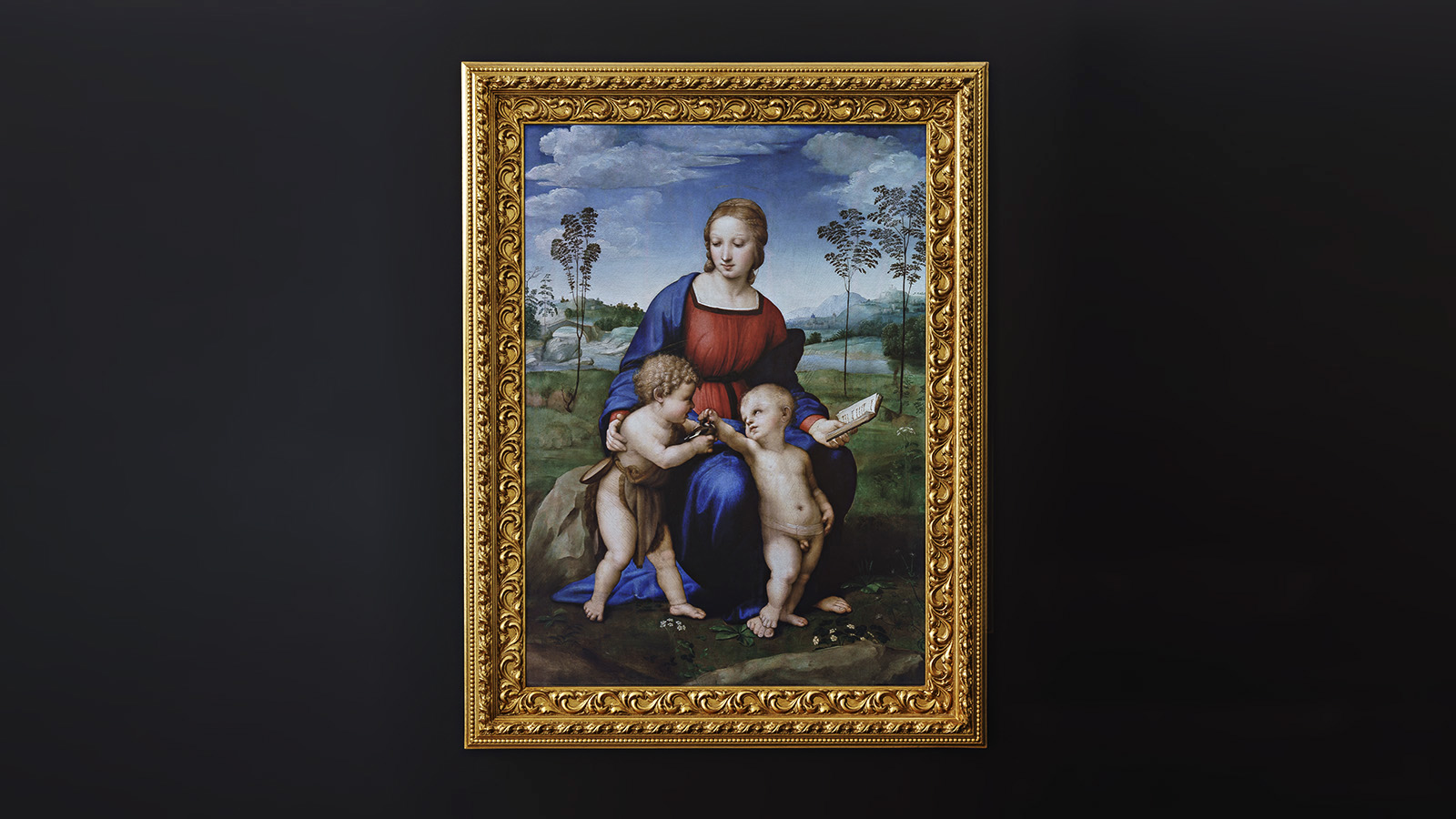For decades, anyone eager to take in Raphael’s “Madonna of the Goldfinch” had to do so at Florence’s Uffizi Gallery, just as a viewing of Hayez’s “The Kiss” entailed an excursion to the Pinacoteca di Brera and da Vinci’s “Portrait of a Musician” a journey to the Ambrosian Library in Milan. But contemporary art gallery Unit London is set to shake up that situation. It’s planning to gather these Italian masters under a single roof — not by summoning the physical works to its locale, but by engaging the tech du jour, the blockchain.
From February 16 to March 19, the London gallery will present Eternalising Art History, an exhibition of six Italian masterworks by the likes of da Vinci, Caravaggio, and Modigliani — in digital form. Termed digital art works (DAW), these virtual pieces are minted on the blockchain, certified by a patented digital encryption system, and come accompanied by a screen and handcrafted frame for display purposes.
The technology is that of exhibition partner Cinello, the digital art platform that also sourced the world-class works from four Italian institutions, namely the Uffizi, Pinacoteca di Brera, the Ambrosiana Library, and Parma’s Complesso Monumentale della Pilotta di Parma. The digital paintings, each available in a limited edition of nine, are marked for sale, with 50 percent of the net revenue set to go to the museums’ conservation efforts, according to Unit London.

The exhibition features six iconic Italian masterpieces including Francesco Hayez’s “The Kiss” (left) and Amedeo Modigliani’s “Head of a Young Lady” (right). Images: Courtesy of Pinacoteca di Brera (Milan) and Cinello
Notably, most of these six works are being shown within the UK for the first time (albeit as DAWs), broadening access as well as their audience. “It’s an incredible opportunity for us to be able to take this new, radical technology to elevate and tell the story of classical masterpieces from centuries ago,” Joe Kennedy, Co-Founder of Unit London, tells Jing Culture & Commerce. “It’s exciting in terms of storytelling, recontextualizing these works in a digitally reproduced form, and having an amazing degree of freedom to communicate what this technology does.”
It’s a project that duly captures Unit London’s broader project to cultivate next-gen talents and diversify the art space. To that end, Eternalising Art History represents the first of three similar shows that the gallery has planned way into 2023 — a series that’s likely to further underscore how NFTs or DAWs can serve storytelling, education, and access “to open up [the art world’s] traditionally closed door system to a much bigger audience,” per Kennedy. Here, he expands on the mission and motivation behind his gallery’s first NFT exhibition.
Why the decision for Unit London to get involved with NFTs?
The space is exciting because digital artists who were making great work have long had to go outside of the art world in order to make money. That’s the fundamental shift that blockchain technology is allowing — for digital artists to be able to see themselves, and be perceived and seen and treated as artists. If there’s a technology here that could blow the gates wide open for a whole group of artists who have been on the fringes for so long, then it was a no-brainer for us. We jumped straight into the space as soon as I understood the mechanics. I genuinely believe that the masterpieces of the next 20, 30 years will be digital works by digital artists.

Each DAW is certified on the blockchain, and includes a screen and handcrafted frame, effectively serving as a digital/physical reproduction of the original work. Image: Leonardo da Vinci, “Portrait of a Musician” DAW® Courtesy of Veneranda Biblioteca Ambrosiana (Milan) and Cinello (Framed)
What was the thinking behind Eternalising Art History?
The exhibition is very unique, especially for an audience who might never go to the Uffizi in Florence or who might not be exposed to these works for whatever reason. It’s using very modern technology to tell very old stories, and to allow those stories to continue to be told in the future.
And could you speak to the participation of the four Italian institutions in the exhibition?
The most exciting thing about the show is how it’s using the technology to generate revenue for the museums because the owner of a DAW is not just a collector, but essentially playing the role of a patron that’s funding the museum. The sale price is going directly back to the museum to conserve those works or ramp up their marketing efforts, making sure they’re getting more people through the door.
A museum’s role is to preserve its collections and educate audiences coming through the door — and this is a great way to be able to do that. To transport one of these paintings to London for an exhibition, just the cost and the environmental impact associated with that is a lot. This is an amazing way for them to be able to achieve some of their objectives and to keep up with digital culture.

The show, notes Kennedy, will help participating museums generate revenue, while expanding their reach. Image: Michelangelo Merisi da Caravaggio, “Bowl of Fruit” DAW® Courtesy of Veneranda Biblioteca Ambrosiana (Milan) and Cinello
What audiences do you foresee Unit London reaching with this exhibition? Might they be NFT collectors or traditional buyers of fine art?
So many traditional collectors have started to reach out, like, “How do I get involved? Who should I be looking at?” I think this show is immediately fascinating to both sides because these are paintings you can’t see outside of Italy. It’s got a mass appeal to the traditional collecting audience, and it’s really about communicating the value of the technology. A lot of NFT collectors also want a piece of history and to learn about the fine art world; they love the idea of being able to collect important works from history.
We’re approaching this with the same type of strategy in all of our shows. Sales are always very careful with placements — they want the works to go to good homes and that’s very important, particularly with the artists and the museums in this instance. Obviously, if a collector buys the work and resells it, that’s frowned upon and very damaging to the NFT market. But with DAWs, because of the physical screen, I don’t expect them to be traded like digital assets.
Do you have recommendations for fellow cultural organizations keen to embark on their own NFT projects?
For me, it’s all about curation. I don’t know how many projects are sent to me a day and we’ve been extremely disciplined with the types of work that we show. I think it’s very easy to be distracted in this space, or be overwhelmed and to try and show too many things, but it’s important if you’re building an exhibition to not get distracted and to focus on the curation.



